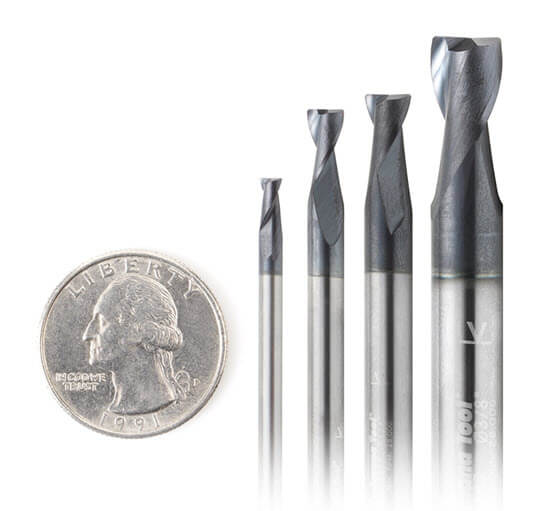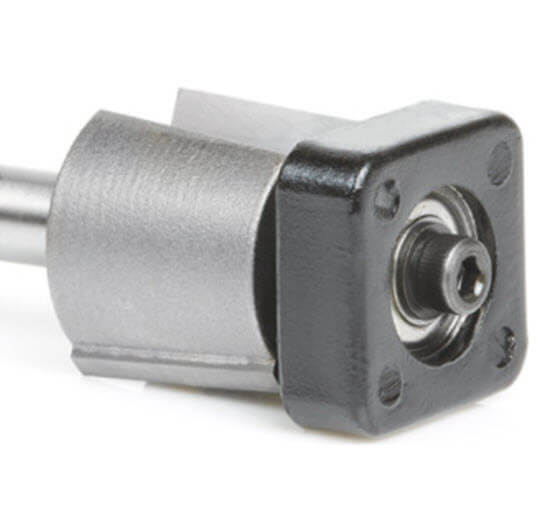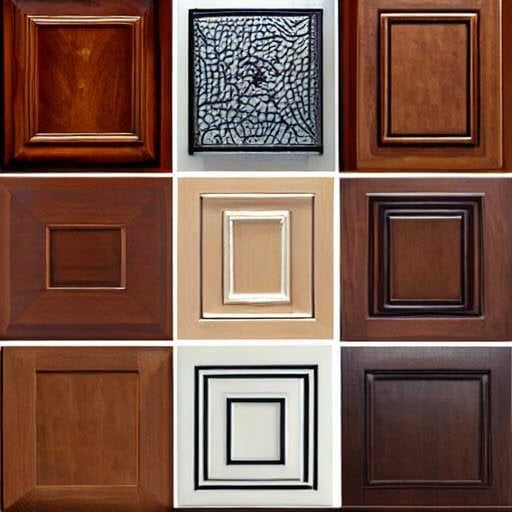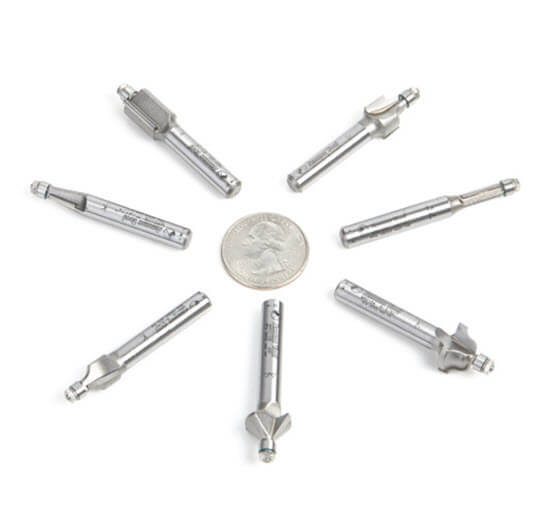
Amana Tool Miniature Router Bits
Hands Down the Best Miniature Router Bits
Bigger is normally regarded as better, and often that is quite a justifiable position. Larger router bits can handle higher loads, have more chunky carbides, can handle higher feed rates. But they cannot do everything.
Something I have been struggling with for a while, and especially when working with smaller designs, is that the large router bits are, well, too large. When pattern copying a fine design for example, the large bearing rounds off a lot of the detail. So it is with definite interest I discovered the miniature router bits from Toolstoday.com.

The bearings are 3/16″ (4.76mm), so it is capable of really getting into tight spaces. Some other small router bits use a non-bearing pin to achieve this, but this leaves the guide pin rubbing against the workpiece at 20,000 RPM, the friction of which quickly leads to heat buildup, and burning of the edge.
There are a number of different profiles in the range, so it isn’t just a matter of being able to copy more intricate patterns with a straight bit, but also being able to apply edge treatments in tight spaces. The mini router bits are 1/4″, so they are able to fit in standard routers either directly, or with a 1/2″ to 1/4″ collet.
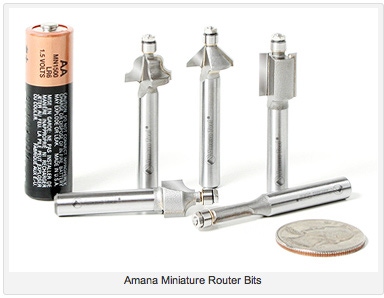
The flush trim bit is always an integral one for a set – it is particularly potent when used to duplicate a template. You may choose to use this miniature version in combination with its bigger brother. The larger one can cut the majority of the outline around the template, then follow up with the miniature one to push right into the detail areas. Might as well not force the bit to do any more work than necessary!

The miniature rabbet bit would be useful in making small boxes, and very small picture frames.

The first of the edge treatment bits, the miniature chamfer bit can be used for edging, and producing a 45° chamfer miter joint.

A couple of different radius miniature round over (corner round) bits are available. These are particularly useful in toy making, used to soften edges of toys.

And the classic profile, the miniature roman ogee router bit.

All of these can be purchased individually, but if you routinely make anything from jewelry to dollhouse furniture, consider investing in a set with 3, 4, 6, 7, or even 8 bits.
The profiles may be no different to the other common ones in your router bit set, but the size will make a big difference in what you can achieve, in situations where you would have had to find an alternate (and often with a compromised finish) option.
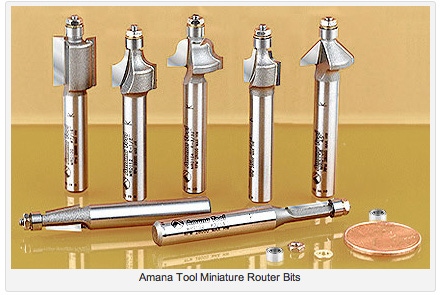
I know tools are not meant to be ‘cute’, but these miniature bits are, at least as far as any router bit can be! So if you want to shrink your router bits, you can either get an electromagnetic shrink ray from the ’80s, or get these miniature router bits from Amana Tool.



